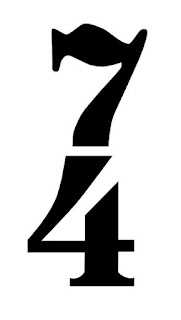Money, it’s a hit
Don’t give me that
Do-goody-good bullsh*t
Pink Floyd’s The Dark Side of the Moon made its first appearance on the Billboard 200 albums chart on March 17, 1973 – exactly 50 years ago today.
One way to celebrate that anniversary would be to plop down on your sofa and listen to the album on your favorite music streaming service – perhaps open a bottle of wine to enhance the experience. (You 420-friendly types might prefer a different means of enhancing your experience.)
 |
| The Dark Side of the Moon album cover |
Or you could drive an hour to a neighboring city and pay $33 to hear a group of anonymous Canadian musicians recreate the album note-for-note live on stage.
Before now, I usually chose the stay-at-home-and-listen-to-the-album option – I rarely went to live concerts even when I was younger and had a lot of friends who went to live shows all the time.
When a group I liked toured in support of a new album, I usually just bought the album instead of seeing them live. In my mind, I was avoiding a lot of expense and hassle – and a live performance is rarely as perfect as a studio recording.
But this time, I chose to go to the live show – and that was the right decision.
* * * * *
In 2003, Craig Martin founded the “Classic Albums Live” series of concerts in Toronto.
Each concert in that series features a live performance of a classic rock album that eschews costumes and other gimmicks and simply attempts to replicate the sound of the original recording.
 |
| A Classic Albums Live performance |
The rotating group of Canadian musicians who perform at Classic Albums Live shows have played the entire Beatles catalog, five different Led Zeppelin albums, four different Rolling Stones albums, Who’s Next, A Night at the Opera, Purple Rain, London Calling, and many, many other albums.
* * * * *
As noted above, I recently went to hear the Classic Albums Live performance of The Dark Side of the Moon.
I was never a big Pink Floyd guy, but you’d best believe I owned a copy of The Dark Side of the Moon.
Of course, just about everyone I knew owned a copy of The Dark Side of the Moon. The album held the #1 spot on the Billboard 200 for only one week, but remained on that chart for a staggering 736 consecutive weeks – from March 17, 1973 until July 16, 1988.
The Recording Industry Association of America has certified it as a 15x platinum album – meaning it has sold 15 million copies in the United States alone.
* * * * *
“Money” (which is the first track on side two of the album) is most notable for its unusual 7/4 time signature.
Most musical compositions are written in 3/4 or 4/4 – meaning they have either three or four beats per measure.
 |
Most songs that have a 7/4 time signature can be broken down into a four-beat unit followed by a three-beat unit, or vice versa. But “Money” doesn’t follow that pattern.
To my ears, the first beat of the “Money” is what we music experts call an anacrusis – an unaccented introductory note at the very beginning of a song.
After that first anacrusis note, each measure of “Money” can be broken down into a two-beat unit followed by a five-unit.
Click here to watch a video that tells you everything you wanted to know (and more) about music with a 7/4 time signature.
* * * * *
“Money” is interesting and original, but I’m glad that 7/4 songs are the exception and not the rule – there’s really no way a 7/4 song can grab you rhythmically like a song with a more conventional meter (like 4/4 or 6/8) can.
Click here to listen to “Money.”
Click here to buy that record from Amazon.



No comments:
Post a Comment